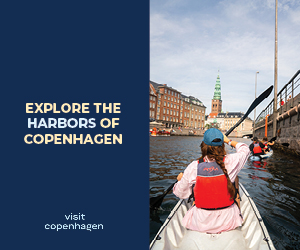Tyres are likely to be a growing problem. As well as being significant contributors to harmful microplastics which end up in the oceans and waterways, tyres which are burned around the globe, as well as for fuel, raise several emissions issues.
The aspirations of much of the middle class in emerging market economies across the plant include automobile or motorcycle ownership. And even where that’s not an option, more and more goods arrive in heavy trucks. While car ownership is on the decline in the United Kingdom, it doesn’t mean vehicles of another kind will proliferate – we increasingly expect a meal or a ride to be just a few taps and swipes away.
A 2018 study by the British NGO Friends of the Earth suggested the most common source of plastic pollution in our waterways comes from tyres, while another study by the International Union for Conservation of Nature found that tyres could account for 28 percent of all plastic pollution globally. At least ten studies since 2014 have found tyres to be a contributor to microplastics in the environment, which can end up in waterways and our bodies, although research related to their impact on human health is still ongoing.
‘Europe generates three million end-of-life tyres each year. Around 94 percent of these are either recycled or recovered in cement production,’says Fazilet Cinaralp, the secretary-general of the European Tyre & Rubber Manufacturers Association, ‘1.8 million tons end up used as materials in sports fields, children’s playgrounds or other uses (like moulded products) and some 1.1 million tons are used in cement industry.’

The United Kingdom produces roughly half a million tonnes of waste rubber, the majority from tyres. Here in Britain, this little known trade is worth as much as £800m. Today, much of that waste is sent to the European Union, but what will become of it after Brexit is an environmental problem, and is likely an afterthought in Britain’s ongoing negotiations with the EU.
The most common way end-of-life tyres are reused includes burning. An EPA report in the 1990s suggested doing so can release 34 different mutagenic chemicals into the air. Modern facilities claim that they can capture harmful emissions. However, today facilities in Europe who use tyres in energy follow rigorous standards. A more recent report in 2008, released by the British government found that ‘under normal operation, there would be a negligible risk to human health’ from the use of tyres as fuel. A 2020 study found that while European co-incineration was a viable method for dealing with other waste tyres, the repurposing of the rubber had even less of an environmental impact.
Nevertheless, a good amount of Europe’s waste rubber is sent to Asia, where it is burned or used in ways that would not meet European environmental standards.
The export of waste tyres doubled between 2014 and 2019, with Britain being the largest exporter. Globally, as little as 50 percent of end-of-life tyres are repurposed.
All of these methods are commonly considered ‘recycling’, but they are far from the sort of recycling envisioned as part of the circular economy. Still, there may be some promising developments around the corner.

The Vulcan Way
Rubber is made durable during vulcanisation, a process that was perfected in the late 19th century. In South-East Asia, rubber plantations in Thailand, Malaysia, and Indonesia produce the lion’s share – 70 percent – of the world’s virgin rubber. Although Malaysia is both a major producer and one of the leading importers of waste rubber, where sooty workshops burn tyres to make fuel for the massive engines of maritime vessels, the country is home to one of the innovative solutions to the environmental challenge.
‘Wherever rubber tyres are dumped, there is always the threat of toxicity seeping into the earth and water, but through recycling and our patented Delink technology we can address these environmental hazards,’ says Vinod Sekhar, businessman and CEO of the Petra Group.
Sekhar’s father was a leading rubber scientist whose innovations helped power Malaysia’s growth as a rubber exporting powerhouse. Now his son hopes to retread some of the same territory with Green Rubber, a process unhooks the sulfur and rubber bonds on a molecular level. ‘Green Rubber compound is cheaper than virgin rubber and can be, depending on the property requirements of the manufacturer, as much as half the price and yet have the same industrial applications,’ Sekhar says.
Modern tyres include some steel and oil which can be recovered. There have been efforts to extract valuable commodities from tyres, but the process developed by the Petra Group is noteworthy because the process has been designed to be both emission-neutral and non-energy intensive. ‘We are looking at taking our patented Delink technology beyond Malaysia to the United Kingdom, Europe and beyond. It will be globally impactful,’ he says.
It is clear that we must deal with the world’s waste tyres. Only burning them is not a solution for developing countries, and the long-term impact of plastic pollution is bad news for our environment. Synthetic alternatives to the rubber in tyres may be found, but those are still years from commercial production, let alone adoption. It might not yet be time to reinvent the wheel, but solving the challenge of end-of-life tyres is the least we can do to improve our environment.
About the author
Joseph Hammond is a journalist who has reported extensively from Africa, Eurasia, and the Middle East. He was a Fulbright Public Policy Fellow with the government of Malawi focused on natural resource issues. He is an alumni of the Emerging Leaders in Environmental and Energy Policy Network. He tweets @TheJosephH.

















